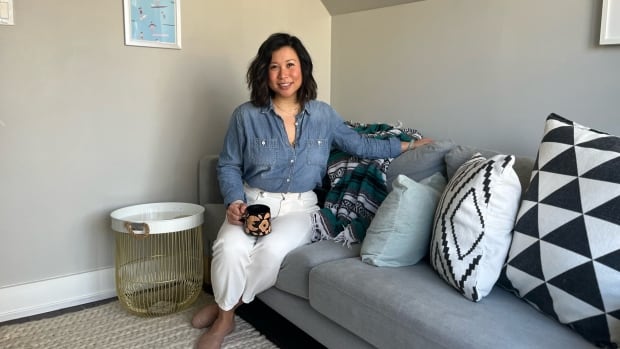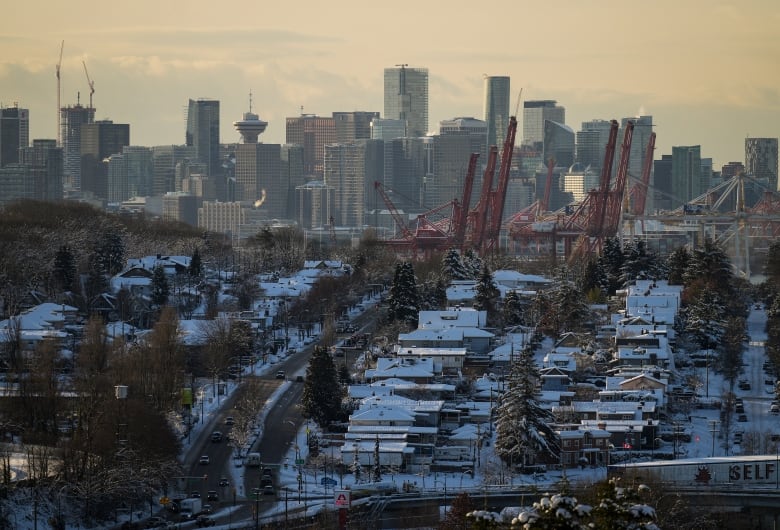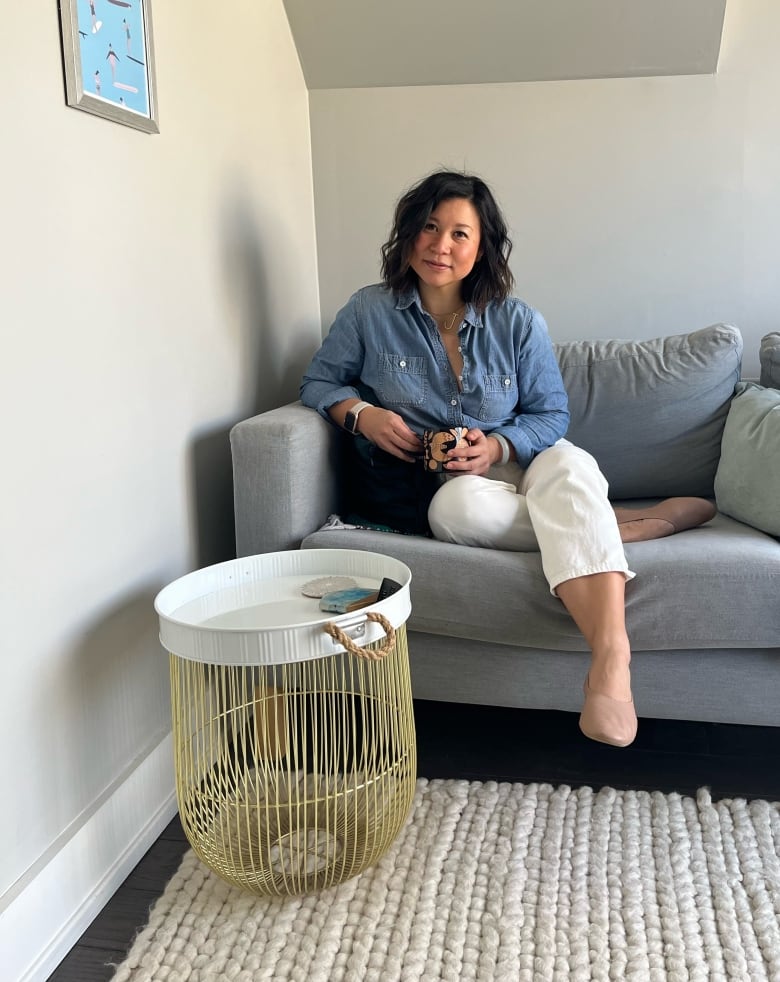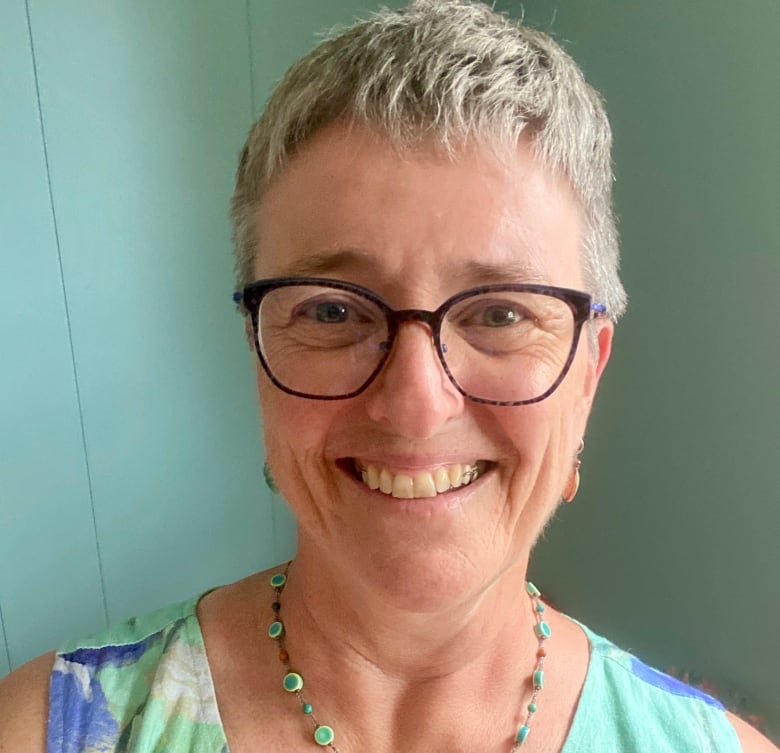
Cost of Living8:36The high price of living alone
Jenn Dumaran is feeling a little stuck.
The 41-year-old marketing professional likes her pretty, light-filled apartment in Toronto’s Greektown where she lives on her own, but at 595-square-feet, there really isn’t room for her to add a dog to the mix.
Since she was last apartment hunting in 2019, snagging this place for around $2,000 a month, rents have shot up. The average one-bedroom is now $2,458, according to a national report from rentals.ca in February. An apartment with a little more room and some backyard space for the adopted rescue mutt she dreams of would run her closer to $3,000 — and that’s a hefty price tag for just one person.
“I really feel like I need to stay here because you can’t find anything that is even within that price range for a one bedroom,” Dumaran told The Cost of Living.
People who live alone have always had large costs to carry on their own. But the inflation Canadians have faced over the past year has meant nearly everything from groceries to gas to rent, or the rate of interest you pay on your mortgage and other debt, has gone up — and financial security has gone down.
Even people like Dumaran — who consider themselves fortunate to have decent jobs — are feeling the pinch, largely due to what some are calling “the singles tax.”
It’s the difference between what a single person pays for an apartment over the course of the year compared to what that same apartment would cost, per person, if it were shared by a couple.
According to that same rental report, the average one-bedroom apartment in Toronto was $2,458 as of February. At that rate, over the course of the year, a single person will pay nearly $30,000 to live there, instead of around $15,000 if they were sharing that space with a partner. Therefore the “singles tax” is almost $15,000.

In Vancouver, the average one-bedroom is $2,730, so the extra cost borne by a single person is $16,380. In Halifax, rents are a little more reasonable, but the singles tax still adds up to around $10,300.
And more people than ever are footing those high housing bills on their own. When the latest census was conducted in 2021, 4.4 million Canadians adults lived alone — or around 15 per cent — up from 1.7 million, or 7.1 per cent, in 1981.
And that figure doesn’t capture all the people who are sole breadwinners, but living with children or other dependents.

Budget shortfalls
Iglika Ivanova, a senior economist at the Canadian Centre for Policy Alternatives based in Vancouver, said there wasn’t enough in Tuesday’s federal budget to make a substantive difference to the precarious situation faced by people who live alone or who are sole breadwinners.
While the budget did include a rebranded version of the doubled GST credit seen last year, now called the grocery rebate, Ivanova said that to really move the needle, the government would have had to make significant new investment in affordable housing.
“I think there’s a missed opportunity to really help, because the grocery rebate is nice but really, if we don’t get a handle on what’s happening in the housing market, then we can’t control those exorbitant rent increases in the new units, and people are not going to be doing well at all. We’re going to have serious problems.”
While housing is the biggest expense, it’s not the only expenditure to skyrocket in recent months.

“I was never a person that was very concerned about where I was grocery shopping. I wasn’t checking prices,” said Dumaran. “I really enjoyed grocery shopping and going to different grocery stores and, you know, trying new things. Now, I really have restricted myself to a No Frills type of shop.”
She was mostly a transit or bike commuter before, and now she’s using her car even less. And on her office days, she’s even more strict about bringing food from home to avoid the high costs of buying lunch in the food courts around Toronto’s financial district, she says.

Dumaran is quick to point out that she’s so much better off than many others. She’s advancing in her marketing and event-planning career. Her landlords didn’t raise the rent during the toughest couple of years of the pandemic, and she’s not struggling to feed a couple of kids. Still, she worries that for her and others around her age, typical milestones like home ownership are out of reach.
‘The most overlooked group’
Still, there hasn’t been a ton of ink spilled over what it’s been like for people who live alone to manage during high inflation, especially in places where housing costs have also skyrocketed.

“Single adults are perhaps the most overlooked group in the country in terms of thinking about strategies to alleviate poverty and food insecurity,” says Elaine Power, a professor in the School of Kinesiology and Health Studies at Queen’s University who researches food security and advocates for universal basic income.
She said poverty rates for people living alone are “significantly higher” than the general population.
Inflation has only made that worse, said Power.
Toronto-based personal finance journalist Renee Sylvestre-Williams said people who live alone have to get creative if they want to save money on food and other essentials.

A lot of the specials that grocery stores offer means you have to buy two or more to get the lower price — and that doesn’t make sense when there’s only one mouth to feed.
She said a good strategy is to co-ordinate with family or friends for a Costco run and then divvy things up. Or to be strategic by buying non-perishables when there’s a deal. Essentials like shampoo and toothpaste go on sale, too, and having a few extras of those isn’t going to gobble up all your closet space, she said.
Cutting back
Sara Hodge, a self-employed marketing manager and single mom of two, is paying $2,800 a month to rent the three-bedroom townhouse she lives in with her teenage sons. She says there’s a feeling of vulnerability given the red-hot rental market; if she had to find a new place at current prices, it would likely cost her around $3,300 a month.
When inflation started spiking last year, she began employing strategies she’s never had to think of before. “I’ve been cutting back on my hydro and gas usage,” said Hodge. She used to keep her heat at 22 C while working from home during the day. Now she said she lowers it until the kids get home from school. “I just keep a blanket on my lap.”
We should have an economy where working pays enough that you are able to provide for yourself.– Iglika Ivanova, Canadian Centre for Policy Alternatives
And she’s strict about using hydro during off-peak hours. “I cook all my food for the day by 7 a.m. I’ve been getting up earlier so I can shower and use my hair straightener. I only do the laundry and run the dishwasher at night.”
Ivanova said things like the grocery rebate and other tax credits aren’t enough to prop up households without policies that promote growth in wages, which have not kept pace with inflation. “We should have an economy where working pays enough that you are able to provide for yourself.”

